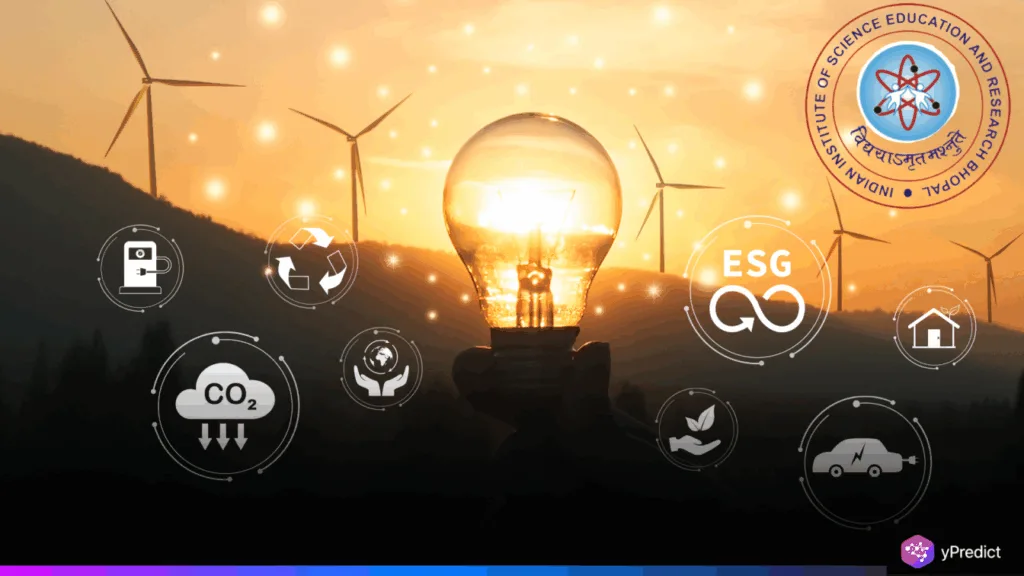
A 52-acre Research Centre for Sustainable Technologies and Energy, with an interest in AI, quantum computing, and renewable energy, has been opened at IISER Bhopal. The center provides direct support to the Indian ‘Make in India’ initiative and its commitment to achieving net-zero emissions by 2070. The R&D expenditures have increased at a rate of 15 percent per annum since 2020, and this facility is a confirmation of this upward trend. With the opportunity to turn the accepted limits about the power of innovation in the country, the initiative also has the agenda to unlock the regional economy.
Tapping National and Global Sustainability Goals
The path to net-zero emissions that India proposes to take by 2070 relies on massive-impact innovation centers, such as the new center of IISER Bhopal. The adoption of sustainable technology, which includes solar energy, AI, quantum computing, and biotechnology, is related to the reduction of climate impact in the country and energy priorities on a global level. The International Energy Agency categorically states that the investments in the analysis of renewable energy globally totaled an enormous amount of $9.5 billion in 2024.
This move will support the making of India’s mission since domestic innovation will help to find solutions to the world’s problems. It also comes at the opportune moment when India is experiencing high growth in R&D, an average of 15% year on year since 2020. The Madhya Pradesh government, through the center, will play one of the central roles in terms of applied and theoretical research and in the commercialization of innovations that can be scaled to national proportions.
The selection of Bhopal would refute the archaic discourse that the only place of innovation is in the metro cities. Locating a significant hub of DeepTech in the heart of India helps to decentralize academic research leadership and provide more developed technology to underprivileged areas. The fact that the facility has a research and innovation park enhances this vision, which provides the infrastructure to engage the industry, creating high-skill positions for scientists, engineers, and entrepreneurs throughout the region.
Leadership, Ecosystem Design, and Long-Term Collaboration Strategy
The center’s success hinges on leadership that blends academic vision with practical execution. Under Professor Gobardhan Das, the institution emphasizes a model of collaboration that connects research with implementation. The center aims to foster breakthroughs in sustainable tech while ensuring those breakthroughs are industry-ready. This is already underway, with IISER Bhopal receiving a joint MIT–IIT Kanpur seed fund for sustainable technologies, further validating the center’s global partnerships.
IISER Bhopal has its foundation with some of the already established programs, such as the Centre for Research on Environment and Sustainable Technologies (CREST) and the clean energy research group. The programs are climate science and renewable energy, and combining them with the new center will ensure the faster evolution of cross-disciplinary solutions.
The center also includes a research and innovation park designed to host start-ups and industry research labs. This park will act as a tech incubator, accelerating the time from idea to product and offering infrastructure for pilot-scale deployment. The inclusion of features like industry training, modular lab spaces, and real-time testing environments reflects a clear plan to turn research into impact. It also ensures students are trained not just as researchers, but as innovators and builders prepared to meet India’s clean energy and tech goals.
A Defining Step for India’s Clean Innovation Future
The new research center at IISER, Bhopal, has the mark of a research center that is more than a scientific undertaking; it is a national announcement of intent. It is a pledge to inclusive innovation where sustainability, energy self-sufficiency, and DeepTech innovation can happen outside giant cities. The center can show the example of mixing scholarly achievements, collaboration of various sectors, and impact-oriented research, paving the way for a new aspect of Indian development. Having a clear net-zero alignment and an expanding environment of bloom-and-groyne R&D, this effort is apt to make breakthroughs that count.







